
Palau is an island country in the Micronesia subregion of Oceania in the western Pacific. The republic consists of approximately 340 islands and connects the western chain of the Caroline Islands with parts of the Federated States of Micronesia. It has a total area of 466 square kilometers (180 sq mi), making it one of the smallest countries in the world. The most populous island is Koror, home to the country's most populous city of the same name. The capital Ngerulmud is located on the nearby island of Babeldaob, in Melekeok State. Palau shares maritime boundaries with international waters to the north, the Federated States of Micronesia to the east, Indonesia to the south, and the Philippines to the northwest.
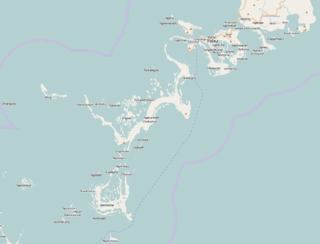
The Republic of Palau consists of eight principal islands and more than 250 smaller ones lying roughly 500 miles southeast of the Philippines, in Oceania. The islands of Palau constitute the westernmost part of the Caroline Islands chain. The country includes the World War II battleground of Peleliu and world-famous rock islands. The total land area is 459 km2 (177 sq mi). It has the 42nd largest Exclusive Economic Zone of 603,978 km2 (233,197 sq mi).

Koror is the state comprising the main commercial centre of the Republic of Palau. It consists of several islands, the most prominent being Koror Island. It is Palau’s most populous state.

Airai, located on the southern coast of Babeldaob island, is the second-most populous state of Palau. It contains the country's chief airport, Roman Tmetuchl International Airport, and is connected by the Koror–Babeldaob Bridge to nearby Koror Island.

Peleliu is an island in the island nation of Palau. Peleliu, along with two small islands to its northeast, forms one of the sixteen states of Palau. The island is notable as the location of the Battle of Peleliu in World War II.
The Southwest Islands of Palau are several small islands spread across the Pacific Ocean about 600 km from the main island chain of Palau. They make up the Palauan states of Sonsorol and Hatohobei. The nearshore islands to the southwest of the main island of Palau (Babeldaob), which belong to the states of Koror, Peleliu and Angaur and the unincorporated Rock Islands, are not considered part of the Southwest Islands.
Tobian is the language of Tobi, one of the Southwest Islands of Palau, and the main island of Hatohobei state. Tobian is a Micronesian language spoken by approximately 150 people, about 22 are native speakers. The speakers are located in either the island of Tobi or in Echang, a hamlet of Koror, the former capital of Palau. Tobian and Sonsorolese are very close, and appear to be gradually merging towards a new dialect called "Echangese". Earlier in the 20th century, about 1000 people lived on the island. Shortly before and during the First World War, those numbers dropped severely due to an abundance of disease.
The Micronesians or Micronesian peoples are various closely related ethnic groups native to Micronesia, a region of Oceania in the Pacific Ocean. They are a part of the Austronesian ethnolinguistic group, which has an Urheimat in Taiwan.

Kayangel (Ngcheangel) is the northernmost state of Palau 24 km (15 mi) north of Koror. The land area is about 1.4 km2 (0.54 sq mi). The population is 54.
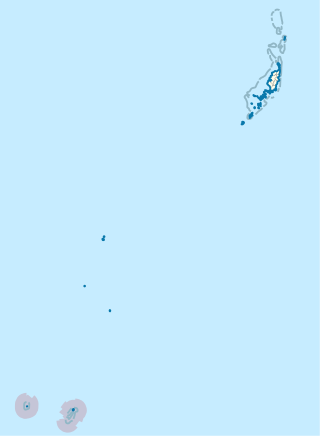
Tobi, or Hatohobei (Tobian), is the southernmost of Palau's sixteen states, consisting of Tobi Island and Helen Reef. The total land area is about 0.88 km². The population was 25 in 2015. Tobian, English, and Sonsorolese are the official languages of Hatohobei State.
Sonsorolese is a Micronesian language spoken in Palau, originally on the islands composing the state of Sonsorol, and spreading through migration elsewhere in the country. It is very close to Tobian.

Jellyfish Lake is a marine lake located on Eil Malk island in Palau. Eil Malk is part of the Rock Islands, a group of small, rocky, mostly uninhabited islands in Palau's Southern Lagoon, between Koror and Peleliu. There are about 70 other marine lakes located throughout the Rock Islands. Millions of golden jellyfish migrate horizontally across the lake daily.
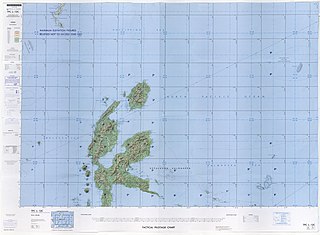
Tobi is an island in the Palauan state of Hatohobei. With a population of about 30, it holds all of the state's people, with the exception of a weather base on Helen Island. Most of the inhabitants live on the island's west side and speak Tobian. Tobi, Helen Reef (Hotsarihie), Transit Reef (Pieraurou), and the islands in the state of Sonsorol make up the Republic of Palau's Southwest Islands. Tobi Island is 1.6 km long and 0.8 km wide, and has an area of about 0.85 square kilometres (0.33 sq mi).

Merir, or Melieli, is a small outlying island of the Palau group, in the western Pacific Ocean. The island has an area of 0.90 square kilometres (0.35 sq mi) and is very long and narrow, stretching approximately 2.4 kilometres (1.5 mi) from north to south but only approximately 667 metres (2,190 ft) at its widest point. It is uninhabited. An abandoned village which previously hosted a radio station lies in the northwest part of the island.

A twenty-three-part referendum was held in Palau on 4 November 2008 alongside the country's general elections. Voters were asked questions on requirements of citizenship to hold office, government provision of primary school and health care, the definition of marriage and term limits for Parliament. Only the proposal permitting naturalization for certain adoptees failed to obtain the requisite majority of the vote and majority in 3/4th of the states.

The effects of Typhoon Bopha in the Caroline Islands were significant, though limited in extent in comparison to the cyclone's intensity. Typhoon Bopha originated from a tropical depression south of Pohnpei on November 25, 2012, and tracked generally westward for more than a week. During this time, it threatened several islands across Micronesia, prompting the issuance of typhoon watches and warnings. The system skirted the Nomoi Islands on November 28 where it caused limited damage. Thereafter, it became a threat to Palau as an intense typhoon. Residents there boarded up their homes and some evacuated to public shelters while officials enacted a strict curfew during the typhoon's passage. Bopha passed 55 km (34 mi) south of Angaur island, or 100 km (62 mi) south of Babeldaob, on December 2 with winds of 185 km/h (115 mph).

The Ministry of Education is a government agency of Palau, headquartered in Koror City.

A constitutional referendum was held in Palau on 1 May 2020. Voters were asked whether they approved of an amendment to article 1 of the constitution, which defined its maritime borders. The proposal was approved by 97% of voters.
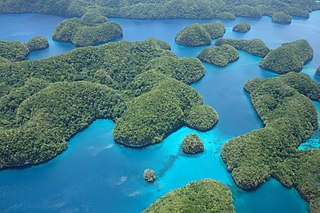
The Palau tropical moist forests is a tropical and subtropical moist broadleaf forests ecoregion in Micronesia. It encompasses the nation of Palau.
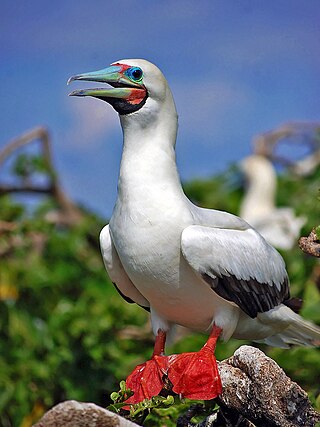
Fana Island, or Fanna Island, is a 40 ha, uplifted reef island in the state of Sonsorol in the Southwest Islands of Palau in Micronesia in the south-west Pacific Ocean. It is flat, low-lying and susceptible to storms. Although uninhabited, it is occasionally visited by people from nearby Sonsorol Island.






















